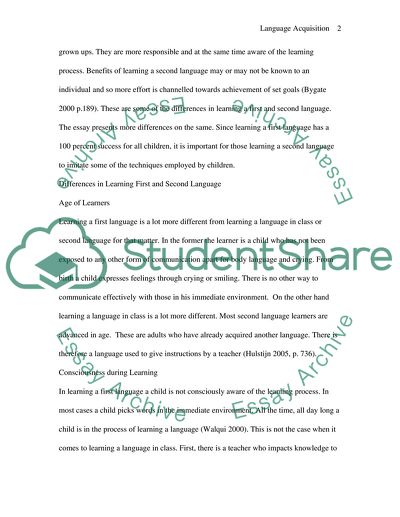Cite this document
(The Case With Second Language Learning: Rules of Grammar and Structure Essay, n.d.)
The Case With Second Language Learning: Rules of Grammar and Structure Essay. Retrieved from https://studentshare.org/education/1747035-what-are-the-most-important-differences-between-learning-a-first-language-and-learning-a-language-in-the-class
The Case With Second Language Learning: Rules of Grammar and Structure Essay. Retrieved from https://studentshare.org/education/1747035-what-are-the-most-important-differences-between-learning-a-first-language-and-learning-a-language-in-the-class
(The Case With Second Language Learning: Rules of Grammar and Structure Essay)
The Case With Second Language Learning: Rules of Grammar and Structure Essay. https://studentshare.org/education/1747035-what-are-the-most-important-differences-between-learning-a-first-language-and-learning-a-language-in-the-class.
The Case With Second Language Learning: Rules of Grammar and Structure Essay. https://studentshare.org/education/1747035-what-are-the-most-important-differences-between-learning-a-first-language-and-learning-a-language-in-the-class.
“The Case With Second Language Learning: Rules of Grammar and Structure Essay”, n.d. https://studentshare.org/education/1747035-what-are-the-most-important-differences-between-learning-a-first-language-and-learning-a-language-in-the-class.


